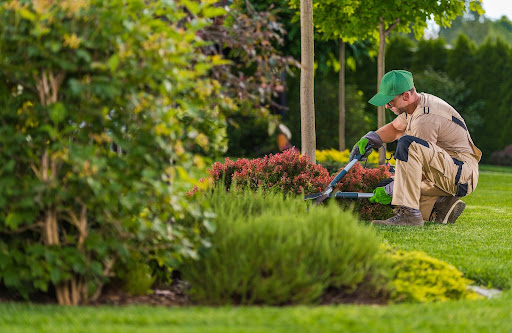
Spring is the perfect season for HOAs for large-scale community maintenance and enhancement projects. But for this to go well, you will need a good spring maintenance plan to ensure a safe and pleasant environment for all residents.
The Importance of Spring Maintenance for HOAs
Spring maintenance is crucial for many HOAs as it is the best time to address any wear and tear accumulated over the past year. Through regular upkeep, you are helping prevent minor issues from getting bigger and becoming costly issues just to preserve your community’s aesthetic appeal. If done properly, HOAs can ensure the longevity of shared amenities and infrastructures and boost resident satisfaction.
First Things First: Community Inspection Checklist
As with any maintenance task, your HOA will first need to inspect all common areas and amenities in the community comprehensively. Through this, the HOA will be able to spot major and minor issues that need to be addressed. It also helps set priorities for maintenance work in the spring.
Here’s a checklist for conducting a community inspection.
Assess Building Exteriors
When doing inspections, the first spot you can observe is the building’s exteriors. For this part, make sure to look for signs of wear and tear. These may come in the form of peeling or cracked paints, cracks in stucco or sidings, and damaged window seals, among others.
Chipping paint and small cracks only lead to more significant structural issues if neglected. Take note of areas that need repainting and resealing so that you can ensure that the building is protected from the elements. On top of that, addressing exterior crafts helps maintain the visual appeal of buildings and increases property value.
Inspect Roofs and Gutters
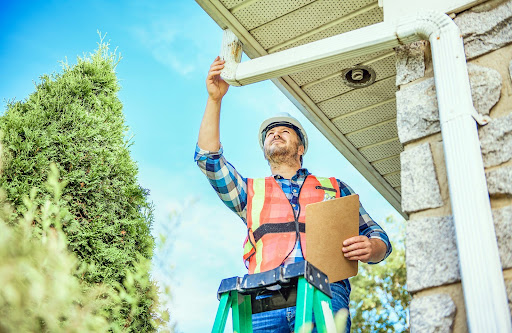
Another major area that you need to inspect for spring maintenance is roofing. You should check if your roofs have missing or damaged shingles. Also, take note of any possible leaks and signs of wear and tear.
Besides the roof, you must inspect your gutters for any dirt, damage, or clogging. Proper drainage is essential to avoiding bigger roofing damage, so getting buildup early is key to preventing this.
Evaluate Common Area Interiors
After checking the exterior of buildings for any issues, your HOA should head inside common areas to spot any damages. Clubhouses, fitness centers, and recreational facilities should be thoroughly inspected for signs of wear and tear.
Other than structural damages, your HOA must also check that the equipment in these common buildings is in good working order. Take note of any broken locks, damaged flooring, or malfunctioning HVAC systems that you must repair or change.
Landscaping and Grounds Maintenance Checklist
Proper landscaping contributes to the visual beauty of your neighborhood. Moreover, it provides residents with enjoyable outdoor spaces.
Spring is the best time to refresh your neighborhood’s landscape appeal. Here are some things you need to address.
Lawn Care and Planting
When maintaining common lawn areas, you should factor in aeration, fertilization, and weed control so that the grass grows healthily. If you notice they are patchy or thinning, you should assess whether reseeding is needed.
Other than the grass, planting native California plants that use less water may be a great move to do in spring. It requires less maintenance but adds more vibrancy to your common areas.
Tree and Shrub Pruning
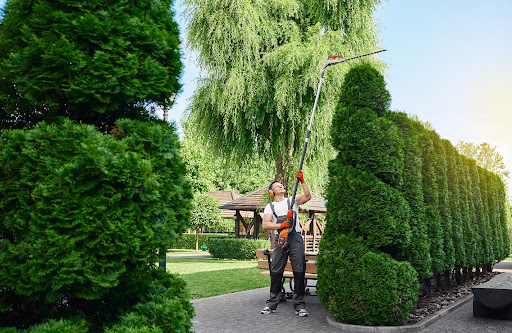
When it comes to trees and shrubs, pruning is a must to promote healthy growth. Neglecting overgrown branches may pose a safety risk for residents, especially in common areas like walkways and parking lots.
Removing dead branches also promotes new branch growth and improves the area’s appearance. It also prevents the branches from potentially damaging nearby structures and powerlines when they overgrow or when it is windy.
Irrigation System Check
As part of your spring maintenance checklist, you should ensure an efficient irrigation system in good working order. Check whether the sprinkler heads have issues, such as leaks or misalignment, and address them promptly. This ensures your garden areas are well watered while avoiding any wasted water from leaks.
Safety and Infrastructure Assessments
Ensuring the safety and integrity of the community’s infrastructure is a key responsibility of the HOA. Therefore, finding and addressing possible safety hazards immediately is a must, especially for spring maintenance. Doing so prevents accidents and costly liability issues.
Playground and Recreational Areas
To ensure the safety of everyone in the community, especially the kids, your HOA must ensure your playground is safe.
To do this, you must inspect the area and the playground equipment installed. Find any safety hazards that need to be removed or repaired.
Other than repairs, renew any safety surfacing that may have been worn out in the past year. These may include mulch, rubber mats, and cushions that prevent injuries.
If recreational amenities, such as tennis or basketball courts, are found in your playground, inspect them and address any crack or damage that may cause a person to trip.
Walkways and Parking Lots
As part of your regular yearly maintenance, your HOA should check if sidewalks, pathways, and parking have cracks, potholes, or uneven surfaces that must be repaired. These are common issues that pose a safety risk for the community. They also contribute to the pavement’s deterioration as time passes.
After inspection, your HOA should schedule repairs or repavements when needed.
Lighting and Signage
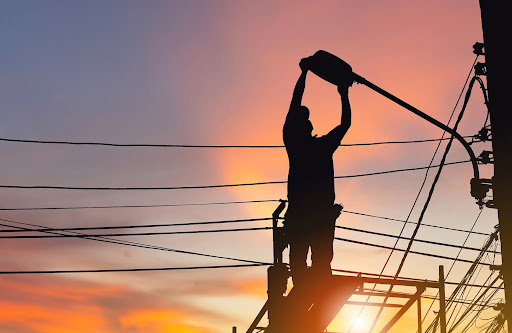
For your neighborhood’s safety and security, you need to ensure that there is adequate outdoor lighting. During your maintenance inspection and process, check the streetlights, pathway lighting, and entrance sights. See if they are adequately lit and note those needing lightbulb repairs.
Your HOA can consider upgrading your outdoor lighting to more energy-efficient options, such as LED lighting or solar panels to power streetlights.
Pool and Spa Maintenance
Many residents in the neighborhood probably enjoy their time at your HOA community’s recreational facilities, like pools or spas. To keep these residents safe, ensure that you perform regular maintenance and safety inspections.
Chemical Balancing
If you have pools, make sure to test the waters regularly. Check if its levels are right at the sweet spot. Pool levels must be in the sweet spot to keep the water safe and clean.
Unbalanced pool chemicals can lead to several issues, including algae growth and cloudy water. To avoid this, perform chemical balancing and ensure your chlorine and water pH are at the proper level, and there is proper water circulation.
Equipment Inspection
Your HOA should periodically inspect pool and spa equipment, including pumps, filters, and heaters, to ensure they function well. If you find leaks or malfunctioning equipment, they should be addressed promptly to prevent more damage or unexpected service disruptions. On top of that, by scheduling routine professional maintenance, you are also extending the lifespan of these systems, effectively reducing long-term costs.
Facility Cleanliness
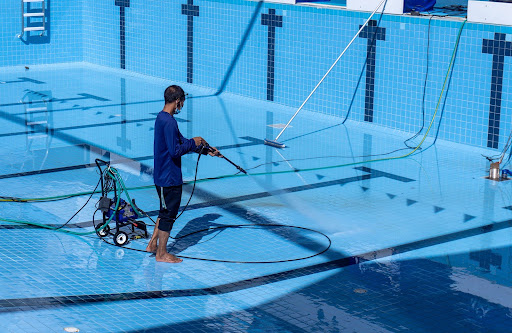
Keeping pool areas clean and well-maintained is crucial for resident satisfaction. Pool decks should be power-washed, and lounge chairs should be inspected for damage. Also, make sure your restrooms are stocked and sanitary. Also, make sure trash bins are emptied regularly to prevent unsightly messes.
Communication and Resident Involvement
Proper communication with residents helps create a sense of community, especially between the HOA board and homeowners. It also promotes cooperation during your maintenance efforts.
As part of the HOA board, you should keep homeowners informed about projects while encouraging them to participate in keeping the community well-maintained.
Informing Residents of Maintenance Schedules
One of the most important things you will need to communicate with residents is your maintenance schedules, whether they happen yearly in spring or periodically every season. They should have access to schedules for roof repairs, landscaping upkeep, and pool maintenance.
This can easily be done through numerous communication channels, like email, newsletters, or via your HOA’s website.
Encouraging Resident Feedback
While the HOA board and your contractors will have experience inspecting for maintenance-related issues, they are still prone to missing things. For this, it is important to have more sets of eyes to notice issues that were overlooked.
Encouraging residents to report any concerns or suggest improvements should be welcomed. You may use surveys, meetings, or an online submission portal to gather feedback from residents.
Organizing Community Clean-Up Events
Spring is a great time to get the residents involved in community upkeep. You can organize voluntary clean-up events, where homeowners who want to help can join in keeping shared spaces visually appealing.
Doing so has at least a couple of benefits to the community. First, having more hands to help out means that maintenance would be quicker. Second, gatherings are social events that help cultivate community and create engagement among neighbors.
Budgeting and Planning for Future Maintenance
Effective financial planning ensures the HOA can address current maintenance needs while preparing for future projects. Here are some of the things your HOA needs to consider.
Reviewing Maintenance Budgets

Your HOA board or budget committee should review the association’s maintenance budget. Doing so ensures you can allocate sufficient funds for necessary repairs and upkeep. If your HOA has major projects planned, such as repaving roads or upgrading amenities, properly planning your finances helps ensure funds are available when needed.
Scheduling Preventative Maintenance
Other than addressing already-visible issues, your HOA should consider regular preventative maintenance. After all, prevention is better than cure.
Planning for Future Improvements
In addition to regular maintenance, your HOA must also consider long-term improvements to enhance the community. These upgrades may include better and more sustainable landscaping, security systems upgrades, or amenity renovations. Planning these projects will help maintain property values and keep the community desirable for current and future residents.
Getting Ready for Spring
Spring maintenance for HOAs in Southern California is essential to keeping communities safe, functional, and visually appealing. As the HOA board, you are responsible for having thorough inspections performed, landscaping needs addressed, and safety in common areas secured. By doing so, your HOA can create a welcoming and well-maintained environment for its residents. Personalized
Property Management offers professional community management services around Southern California. Call us at 760-325-9500 or send us a message if you want to know more about what we do.
Related Articles:
